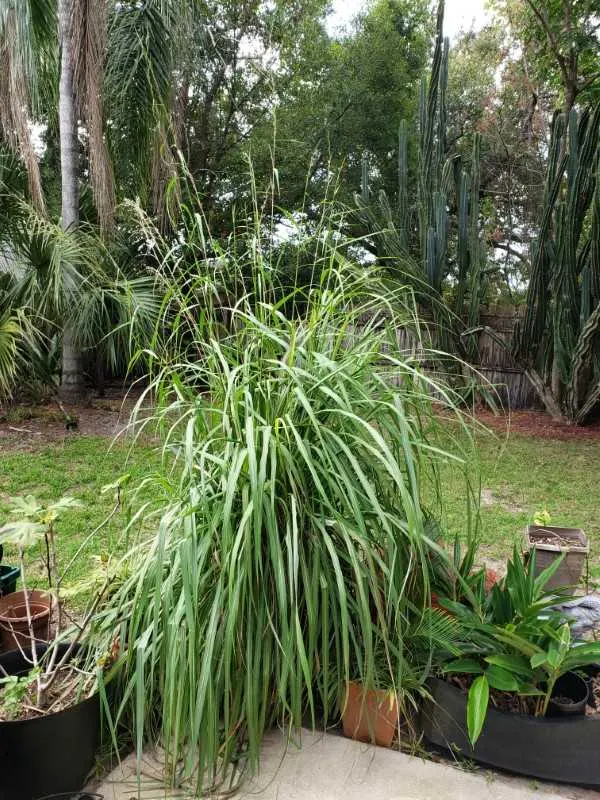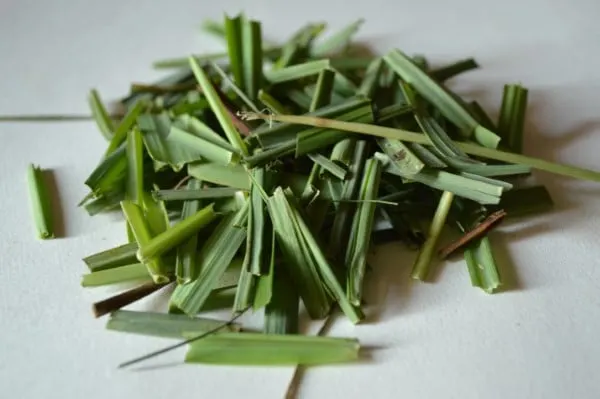Lemongrass is a low-maintenance plant that may be grown outdoors in USDA zones 9 and above or indoors/outdoors in colder zones.
However, it grows quickly, and if not cut back periodically, it can become unmanageable. Continue reading for more information on how to trim lemongrass.
The parts of the lemongrass plant that can be used in cooking are at their peak just before the stalk flowers. At this time, the leaves are very tender and aromatic.
If they become tough or dry, they lose much of their flavor and may even ruin a dish if cooked for too long. Luckily, cutting out old stalks is easy with the right technique.
Lemongrass can be trimmed in several ways, depending on how you plan to use it. Lemongrass can be used fresh or dried for cooking purposes, and some people like to keep lemongrass plants around for good luck.
However, you decide to manage your lemongrass; it is important to know that lemongrass can grow quite bushy with several stalks emerging from the base of the plant. It can become a tangled mess if you do not trim lemongrass regularly.

A Pruning Guide on How To Trim Lemongrass
While your lemongrass is dormant, the best time to cut it back is when the weather starts to warm up in the spring. You can prune the leaf tips throughout the year, but you should do heavy pruning in spring to grow stronger and healthier lemongrass.
This might be anywhere from late February to late April, depending on your climate. For lemongrass to properly recover from an early-season cut, nighttime temperatures should remain steady in the mid-40°F range.
- Pull out all the dead leaves under the plant and then put on gloves and remove any brown outer stalks as well as any brown or rusted leaves. It may be necessary to reach in between the clump to get all the leaves out. However, make sure you leave the inner stalks intact since those are the newer ones.
- Harvest the matured outer stalks throughout the summer to keep the plant’s size consistent. In a gloved hand, grasp stalks larger than 1/2 inch in diameter closer to their root. Twist the stalk till it separates from the rest of the plant. Alternatively, use a sharp knife to remove the plant’s outer stalks.
- Damaged or dead stalks can be pulled or chopped off at any point during the growing season. When removing the injured stalks, take care not to bend or break nearby healthy stalks.
- If the plant looks bedraggled or most of the foliage is dying from winter damage, shear the entire plant back to within 6 inches of the ground in late winter. As the temperature rises, lemongrass swiftly regrows new stalks.
- If the lemongrass stayed healthy and green or if only the tips of the leaves turned yellow, prune back softly in early spring. Remove yellow tips and cut back with shears to retain the desired height. To keep the plant’s height, prune again around midsummer.
Trimming Lemongrass for Use in Recipes
If you’re looking to put the same ingredients into all of your recipes, trimming lemongrass is pretty much a simple one-step process. However, if you want to utilize all parts of the lemongrass plant and make it last as long as possible, there are a few steps you can take!

The lemongrass plant has three main parts that are most commonly used in cooking: the stalk, the bulbous base, and the leaves.
The easiest way to trim it is just to cut off whatever you need for your recipe, but if you’d like to take a more meticulous approach, here’s how to trim lemongrass.
- Begin by firmly grasping the lemongrass stalk with one hand. With the other, make a diagonal cut about 1 – 2 inches from the top, as close to where the leaves start as you can get.
- At this point, if you’re planning on using only part of what you’ve just cut off, go ahead and repeat that same motion a few more times to create smaller pieces.
- Otherwise, if you’d like to use the entire stalk, cut off the top and remove any leaves that are still growing by slicing downward along its side.
- At this point, the only things left on your lemongrass plant should be at the bottom; trim those off by cutting across just below where the bulbous base begins.
- Now you’re ready to chop, mince, grind, or do whatever else your recipe calls for!
As an additional tip, if the lemongrass you’ve just cut starts to dry out before you can use it all, stick it in a glass of water and cover it with a plastic bag. It should keep well for about three to five days, making it last just that much longer!
If you want to use lemongrass fresh, plan on using it soon after being trimmed. That being said, if you have a large amount of lemongrass to cut through and do not plan on using it immediately, place the stalks in a sealed container or plastic bag with some air holes poked into it. Lemongrass will stay fresh for up to five days this way.
If you plan on using dried lemongrass, cut the stalks into 4-inch sections. This is long enough to dry without too much space, but the shorter stalks dry faster.
Bundle six or more stalks in a bundle and tie them together with twine. Hang the stalks somewhere where they will be able to dry out fully, away from direct heat or sunlight. When dried, leaves of lemongrass are easily crushed between your fingers.
The base of the lemongrass plant may be trimmed to make a new stalk grow. However, this should not be done regularly as it will damage the plant and keep it from growing to its full potential.
If you plan to use your lemongrass indoors, place the stalks in a vase with an inch of water and change the water every few days. This will allow the plant to drink while still keeping it fresh for use.
Final Remarks
Now that you know how to trim lemongrass, it may be useful to cut some of them for culinary, medicinal, or aromatic purposes. This might help the lemongrass keep its shape somehow.
However, their growth is quite rapid, so they may need to be pruned more often. It can also be important to promote new growth. Usually, this is done in the early spring. Once you learn how to trim lemongrass, you will keep your plant at the desired size and continue to get the benefits.
It is recommended that you only trim the lemongrass just before use since it will be best to use it fresh. Further, if you like to use the stalks of lemongrass in recipes, it is recommended that you trim the grass only as needed.
This will prevent the stalks from drying out too much. You can also place them in water to lengthen their lifespan.
